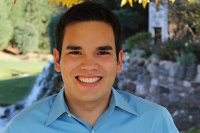The stadium puzzle
It is an ongoing saga in sports; not directly tied to wins and losses, nor tied to the players or coaches, but still woven into the fabric of each sport and tied to how the fan experiences the sport in question. The stadiums, ballparks and arenas in which each game is played have become landmarks in their own right, and while there is constant competition to have the newest, the best and the brightest for fans, the question has always been how to pay for it.
The Cleveland Cavaliers are no different in their goal of balancing team success and improving the fan experience. Cavaliers CEO Len Komoroski wrote a letter, posted on the Cav’s website, announcing the beginning of conversations with the city of Cleveland and Cuyahoga county to develop Quicken Loans Arena, the Cavaliers’ downtown home in the coming years. There are no concrete plans announced. However, The Plain Dealer has reported that the team has inquired if the Cuyahoga County government would provide public money to overhaul the Quicken Loans Arena.
This inquiry is indicative of American sports in today’s world. Public funding is a major contributor in building the newest stadiums across all major sport leagues.The mentality of allocated public funds to stadiums is that the sporting events bring in thousands of fans into the city. Here they spend money in the surrounding businesses, and the stadiums create hundreds of jobs. In all they bring economic growth to the cities in which these professional sport teams are located.
However, the issue arises when the question of how much the cities should put into a stadium for a privately-owned organization. Taxpayer money has paid for some stadiums, entirely driving cities into debt while taking financial burden off of the owners of the team.
Also, there have been many studies that question the actual financial impact of sports teams compared to the multimillion-dollar price tag of the stadium. Furthermore, the demand for professional sports teams and the lack of supply of available teams per league means that sports teams are able to—at times—demand that the cities support the building of these projects or threaten to move to a city that will put forward the money for a new stadium or improvements on the existing stadiums.
This is the ugly side of small market sports team cities, the threat of their teams being moved perpetually hangs over their heads. This is not an outlandish scenario, as just 20 years ago, it happened here in Cleveland. The Browns left the city when Arthur “Art” Modell moved the beloved team to Baltimore, because he felt that the city of Baltimore had the funding to build a first-class stadium; in Cleveland the Browns were operating in the decades-old Cleveland Stadium, out of which the Indians had recently moved, and into Jacobs Park, now Progressive Field.
More recently the Oklahoma City Thunder moved to the city from Seattle after the SuperSonics (the franchise’s previous name) attempted to persuade the Washington state government to provide funding to update Key Arena, and the government refused.
This is the ugly side of sports, and while the Cavaliers’ request likely will not spiral into such drastic measures, it is an issue which the residents of Northeast Ohio must not take lightly. Should their tax money be used to update the Q, or is the current agreement with the revenue from the recently renewed “sin tax” going toward not only the Cavaliers, but also the Browns and the Indians, enough public funds going toward Cleveland’s sports teams?

JP. O’Hagan is powering through his third year as Biomedical Engineering major and Spanish minor, while serving The Observer as Sports Editor. JP is...

